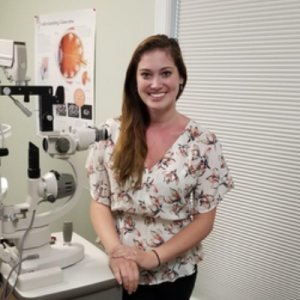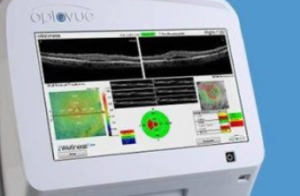Do you have a feeling of eye pain or a build up of pressure behind your eyes? This could be a warning sign of an eye condition.
Many people report a feeling of pressure behind the eyes, and are worried that it can signal a serious eye condition.
If you experience any sharp or dull pain or pressure in or adjacent to the eyes, your eye doctor should be among the first professionals you see.
Any time pressure in or around the eyes is experienced, there is a high chance this is caused by an eye condition, although sometimes the pressure build up can be due to alternative sources.
Here are 7 common conditions that can cause a feeling of pressure behind the eyes:
1. Headaches and migraines
Headaches and migraines are common signs of a vision problem.
According to the American Migraine Foundation, headaches and migraines can lead to an intense or dull pressure and pain behind the eyes, and can last anywhere from a few hours to several days.
Other migraine symptoms may include:
- Nausea
- Vomiting
- Seeing strange lights or “auras” before or while experiencing the headache
- Hearing unusual noises before or while experiencing the headache
- Sensitivity to sound or light
- Pulsing pain in the head
Headaches and migraines are frequently caused by two types of vision problems: binocular vision dysfunction and convergence insufficiency.
Binocular Vision Dysfunction (BVD) is a condition where the two eyes struggle to send one clear image to the brain due to a slight misalignment of the eyes.
Convergence insufficiency (CI) affects near vision and eye muscle coordination. Convergence of the eyes occurs when the two eyes need to focus on a close object, such as a book, computer, or smartphone.
Convergence insufficiency means the eyes struggle to focus easily for near tasks, affecting attention, school work, and office performance in adults.
2. Narrow-angle glaucoma
Narrow-angle glaucoma is a form of glaucoma that occurs due to a severe and sudden increase in eye pressure.
Narrow-angle glaucoma, also known as ‘closed angle glaucoma’ is the cause of less than 10% of all glaucoma diagnosis, but can cause immense feelings of pressure and ocular pain in or adjacent to the eyes.
Narrow-angle glaucoma can result in sudden loss of sight and even blindness.
This condition occurs when the drainage angle, a structure inside the eye that permits fluid to drain normally from the eye, suddenly becomes blocked.
The resulting fluid buildup can cause an abrupt, severe increase in intraocular pressure (IOP) that may result in severe pain in or around the eyes and immediate damage to the optic nerve.
3. Sinus infection
Located below, above, between and behind the eyes, the sinuses are hollow spaces in the skull whose key function is to produce mucus to maintain moisture inside the nose. When these sinuses get infected, it can cause pain in and around the face.
One of the most prominent symptoms of this kind of infection is a feeling of pressure and a throbbing pain adjacent to the eyeballs. A type of sinus infection called sphenoid sinusitis is specifically known to be associated with pain behind the eyes.
Other symptoms associated with a sinus infection, according to the Centers for Disease Control and Prevention (CDC), include:
- Mucus dripping from the nose down the throat
- Cough
- Runny or stuffy nose
- Bad breath
- Pain or pressure in the face
- Loss of sense of smell
- Sore throat
- Headache
- Fever
- Tiredness
SEE RELATED: Why Are Eye Exams Important?
If you feel pressure or pain behind your eye, contact your eye doctor immediately.
4. Facial injury
Car accidents and sports are common causes of injury to the face. Facial injuries are especially common in sports such as boxing, martial arts and football, but they can also be sustained in many other contact sports.
Facial injuries can very often result in a black eye or swelling that causes a feeling of tight pressure and pain around and behind the eyes.
In some cases, these injuries can cause a fracture of the eye socket, which can damage nerves and muscles around the eye, as well as the sinuses – this is an eye emergency.
If the eye socket has been fractured, you might expect symptoms like:
- A flattening of the cheek, sometimes accompanied with severe pain when attempting to open the mouth.
- Blurry or double vision, or a reduction in quality of vision
- An appearance of the eye bulging or sinking into the socket
- A black eye
- Swelling around or near the eye
- Loss of feeling in the face around the injured eye
If any of these signs appear, immediately seek emergency medical attention.
5. Toothache
Many people don’t connect problems with their teeth to problems with their eyes. However, tooth decay and other issues may sometimes cause the experience of pain and swelling around the eyes – this is often known as referred pain.
However, if the infection spreads from the teeth and gums to adjacent tissue in the face, this can cause significant swelling and pain to spread towards the ocular area of the face.
A July, 2007 case study in Malaysian Journal of Medical Sciences discusses an individual whose tooth infection spread to the region of his face around his left eye within 2 days, reducing his vision significantly. As the infection spread, the area around his eye became more swollen and painful.
6. Optic neuritis
Optic neuritis is a condition that is often linked with Multiple Sclerosis (MS), as 50% of people with MS will experience this condition. Optic neuritis is often one of the first signs that a person has MS.
This condition occurs when the optic nerve, which connects to the back of the eye and carries visual signals to the brain, begins to swell, often as a result of infection. This can cause eye pain and temporary loss of vision in one or both eyes, and can take between 4 and 12 weeks to improve.
Beyond eye pain and loss of vision, other symptoms of optic neuritis include:
- Blurred vision, most noticeable when you’re hot
- Hypersensitivity to light
- A complete or partial loss of color vision
7. Graves’ disease
Also known as hyperthyroidism, Graves’ disease results from an overactive immune system attacking the thyroid.
This causes the thyroid to overproduce the hormone thyroxine, which is responsible for regulating metabolism. This overproduction can cause swelling in the muscles, tissues and fats in the face, including around the eyes.
When this happens, the eye begins to bulge from the socket, causing problems with the eye, including an inability to move the eyeball.
The swelling that results from Graves’ disease can cause a feeling of pressure behind the eyes.
Other eye-related symptoms of Graves’ disease include:
- Watery eyes
- Loss of vision
- Double vision
- Dry eyes
- Sensitivity to light
- Ulcers on the eye
- A feeling of irritation in the eyes
When to contact your optometrist?
Anytime you feel pressure or pain behind your eye, please contact your eye doctor immediately.
This is especially true If you experience additional symptoms such as fever, bulging eyes, loss of vision, facial swelling or frequent headaches.
LEARN MORE: Guide to Eye Exams
If you feel pressure or pain around or behind your eyes, schedule an appointment with your eye doctor immediately.
Any time pain or pressure in or around the eyes is experienced, there is a high chance this is caused by an eye condition and it’s recommended to contact your eye doctor immediately.









